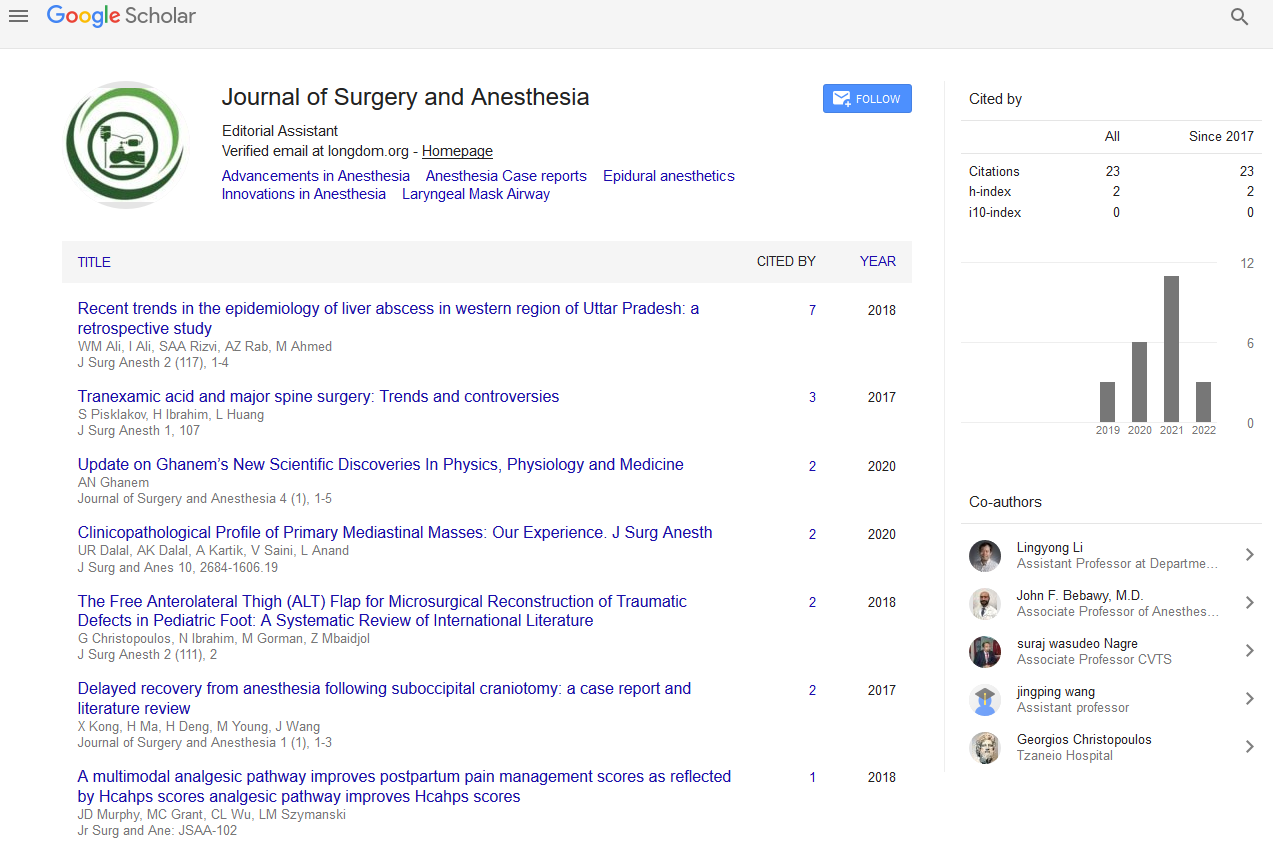Indexed In
- Google Scholar
Useful Links
Share This Page
Journal Flyer

Open Access Journals
- Agri and Aquaculture
- Biochemistry
- Bioinformatics & Systems Biology
- Business & Management
- Chemistry
- Clinical Sciences
- Engineering
- Food & Nutrition
- General Science
- Genetics & Molecular Biology
- Immunology & Microbiology
- Medical Sciences
- Neuroscience & Psychology
- Nursing & Health Care
- Pharmaceutical Sciences
Abstract
Assessment of Diagnostic Accuracy of Knee MRI in Detecting Medial Parapatellar Plicae versus Knee Arthroscopic Findings
Muhyeddine Al-Taki, Hamdi Sukkarieh, Nabil Khoury, Hani Tamim, Ali H Artail, Joel Wazzan and Mohammad Nassereddine
Background: Medial Parapatellar synovial plicae is a common cause of knee pain with a clinical presentation similar to meniscal tear but with a different pathophysiology. Plicae, an extension of the protective synovial capsule of the knee, are originally remnants of embryological folds inside the knee joint that fail to regress with time. Although benign in nature, plicae, when thickened, can impinge on the medial femoral condyle leading to pain. Magnetic resonance imaging is the non-invasive test of choice for detecting Parapatellar plicae.
Objective: The objective of this study was to assess the specificity, sensitivity and diagnostic accuracy of MRI in detecting medial parapatellar synovial plicae as compared to knee arthroscopy findings.
Methods: A retrospective review was conducted at the American University of Beirut Medical Center. Patients who underwent knee arthroscopy and were between 18 and 75 years of age were included. Data on age, gender, knee arthroscopy findings and preoperative MRI findings were abstracted. The diagnostic capability of MRI was assessed by calculating the sensitivity, specificity, positive predictive value, and negative predictive value.
Results: 29 MRIs were read as negative and 52 were positive for the presence of medial Parapatellar plica. Out of the 23 negative MRIs, 14 (60.8%) had plicae as demonstrated during arthroscopy and 9 (39.2%) had no plica as confirmed during arthroscopy. Whereas 34.4% (20 out of 58) patients with arthroscopic demonstrated plicae had negative MRI readings, and 63.6% (38 out of 58) of patients with plicae demonstrated on arthroscopy had actual positive findings on MRI.
Conclusion: MRI accuracy in detecting plica is insufficient compared to knee arthroscopic findings. This take home message might be a helpful tool for insurance company to acknowledge the limitation of MRI in diagnosing plica syndrome due to the significant probability of misdiagnosis.

